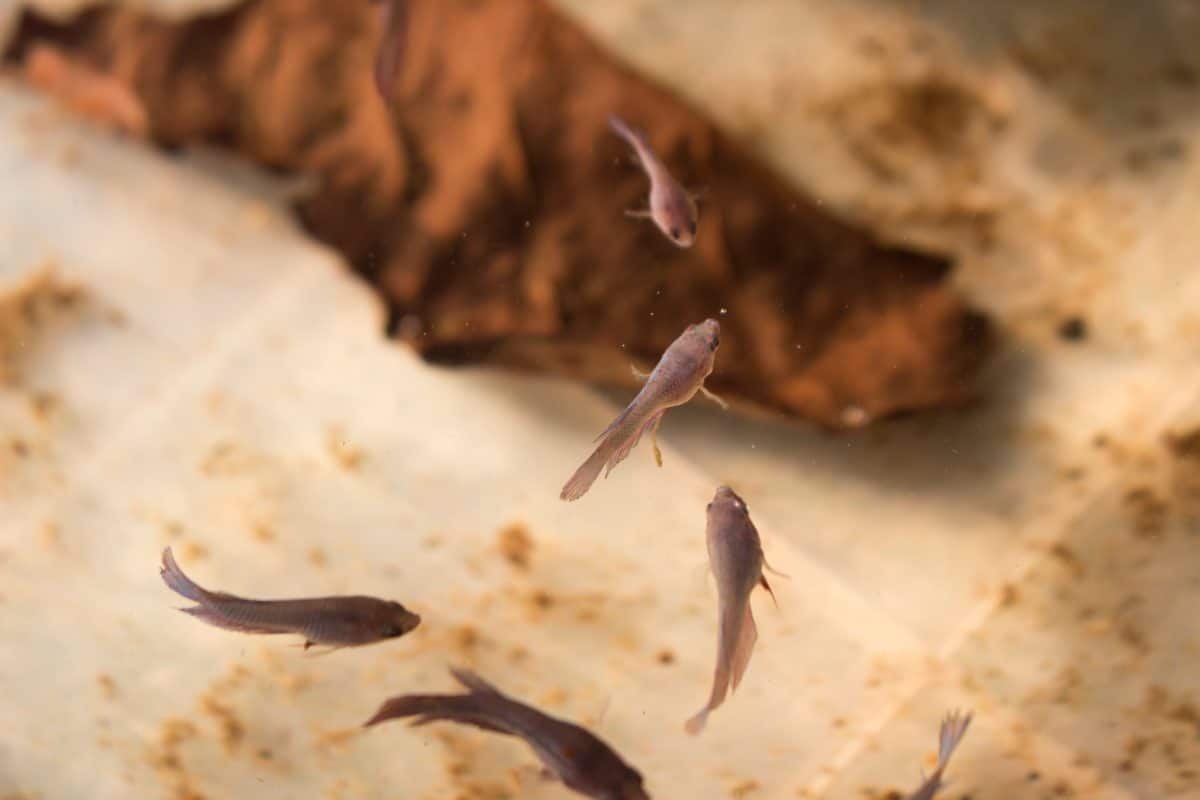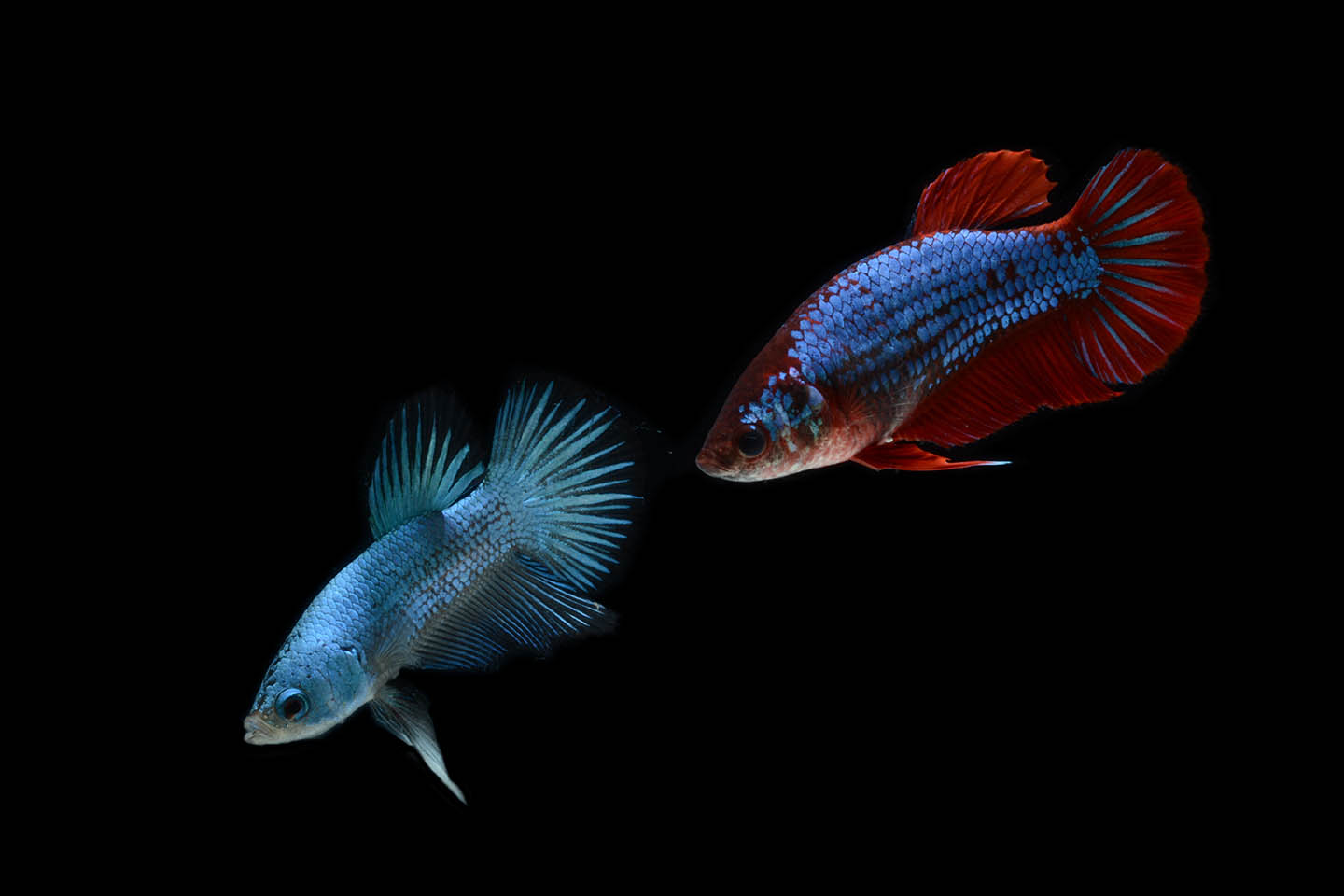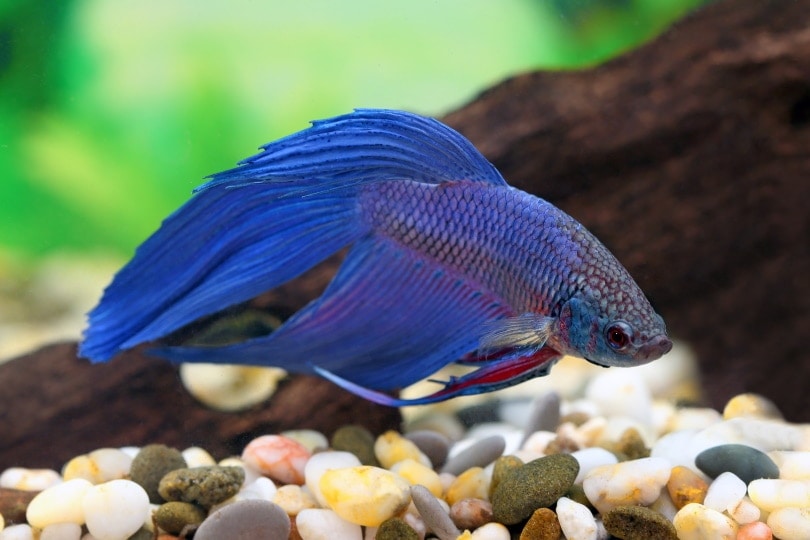Baby Betta Fish: Care Guide, Pictures, Growth Charts & Tips
Updated on
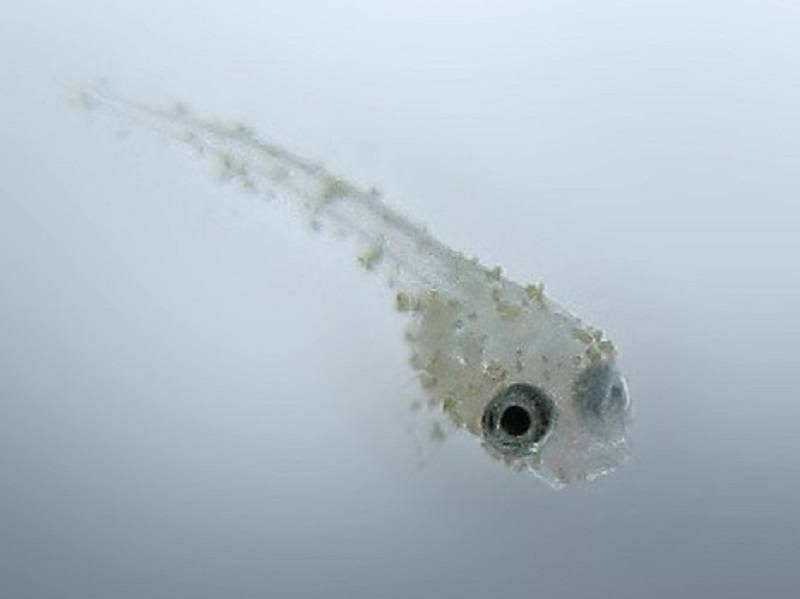
You may be reading this article because you’re new to the betta fish world and aren’t sure how to start. Or perhaps you have some betta experience but want to know more about how to raise a baby. Either way, we’ve got you covered.
You need to know from the beginning that baby bettas are exceptionally difficult to raise, so it’s recommended that only very experienced and knowledgeable fish owners and breeders attempt to raise betta fry. It’s also generally recommended that you don’t purchase any from a pet store.
However, if you’ve found yourself in possession of betta fry, we’ll walk you through some of the basics of raising baby bettas successfully.
Where Can I Get a Baby Betta Fish?
This is the tricky part. Essentially, betta fry are very delicate and generally die quite easily if they aren’t cared for properly. Most pet stores don’t give them the best start in life, so you’ll need to use your own judgment by checking on the conditions of the fry inside the pet store tanks. The youngest a betta fry should be is 7 weeks old if you’re going to purchase one and bring it home.
Bettas are typically kept and sold in cups, so check to see if the water is clean and how active the fry is. If there’s a lot of dead fish in the tanks and cups, don’t buy your fish at that location and visit another pet or fish store.
Your next best bet is buying a betta fry from a good breeder. Search online and look for message boards and groups devoted to betta fish, and someone will likely be able to help.
One of your best options is to breed your own. If you have a hand in the breeding of betta and are able to care for newly hatched fry, you’re more likely to raise them successfully.
Baby Betta Growth Chart
Betta fish are thought to be fully developed by 7 months of age but are still capable of growing in size, depending on how well-kept they are.
The average length of an adult betta is 2.25 inches but can grow up to 3 inches under the right conditions, and they can live from 2 to 4 years as pets.
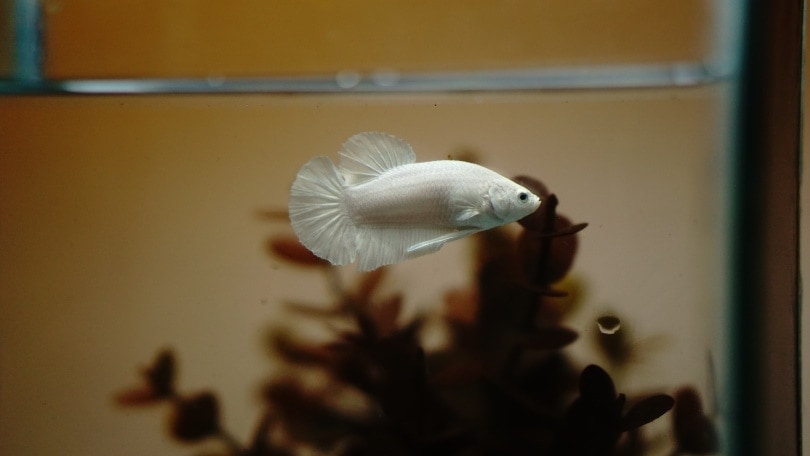
| Betta Age | Betta Length |
| Egg | 0.03-inch diameter |
| 1-day old fry | 0.1 inch |
| 1 week | 0.2 inches |
| 2 weeks | 0.25 inches |
| 3 weeks | 0.34 inches |
| 4 weeks | 0.45 inches |
| 5 weeks | 0.6 inches |
| 6 weeks | 0.85 inches |
| 7 weeks | 1.1 inches |
| 8 weeks | 1.3 inches |
| 9 weeks | 1.55 inches |
| 10 weeks | 1.7 inches |
| 11 weeks | 1.9 inches |
Source: FighterFish.org
What Kind of Tank Does My Baby Betta Need?
A baby betta should be in a 2-gallon tank at an absolute minimum, but 2.5 to 5 gallons is the optimal size. Any smaller can be dangerous to their health and will stunt their growth, while any larger can cause stress. You can increase the size of the tank when they become adults. Additionally, the tank must be fully cycled, and the water parameters need to be maintained. The tank needs to be kept as close to pristine as possible.
Adult bettas require heated water, and the baby bettas actually need the water to be a little higher in temperature. A temperature of 80° F is ideal, but you should stay in the 76° F to 82° F range.
If you decide to use substrate, you should only use sand or small gravel and avoid large rocks or gems. Bettas of all ages enjoy exploring and will investigate the substrate. Betta fry run the risk of becoming trapped under larger rocks or gems and could drown.
Lastly, you must be very careful when changing the water. Betta fry eat frequently and poop a lot, so changing the water is very necessary, but it can also cause the fry a lot of stress. Be as gentle as possible when handling the betta fry during water changes, and try not to make a lot of noises around the tank in general.
If you opt to use a filter, it will cut down on the number of water changes, but you must use a sponge filter. Otherwise, you risk your baby betta getting sucked up into the strong current.
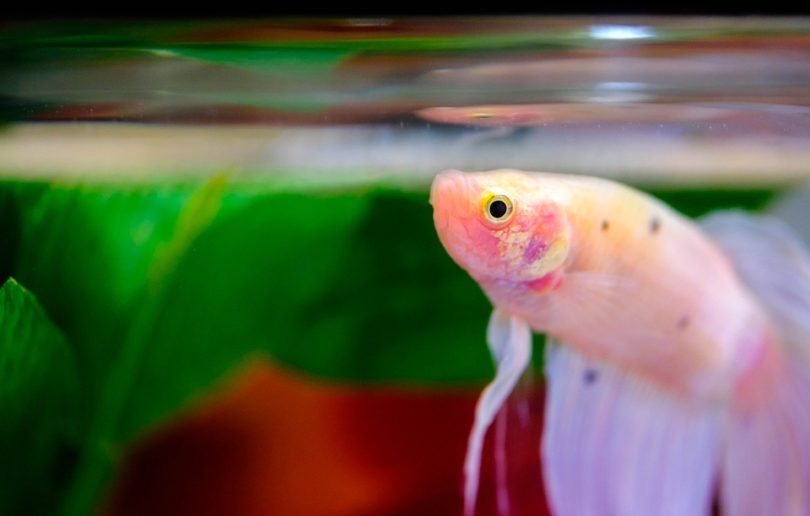
What and How to Feed Your Baby Betta
As already mentioned, baby bettas eat a lot but feeding them can be a little tricky. Your best bet is feeding your fry live food such as brine shrimp and daphnia, as well as tubifex worms, grindal worms, white worms, and mosquito larvae.
If you aren’t able to feed your fry live food, you can try out frozen and thawed as well as miniature pellets (which can also be crushed to make it easier for the fry to eat). You will need to feed your baby betta several times every day. A minimum of 2 times a day but definitely more if they are very young. As your baby betta grows, the size of the food should become bigger as well.
Can Baby Betta Fish Live Together?
Up until a certain age, baby bettas can absolutely live together. By the time they reach about 8 to 9 weeks of age, the Bettas will start to show their colors. This can occur at an earlier stage, but this is quite rare. When they begin to show their colors, the males will start to show aggression, so this is a good time to separate them.
Once they are separated, you can either provide each of them with their own tank or you can put them in cups. Keep in mind that bigger bettas are quite likely to eat smaller fish. You should also avoid placing any other tank mates in with a very young betta. Again, this could cause potential harm and stress, even with the most benign tank mates.
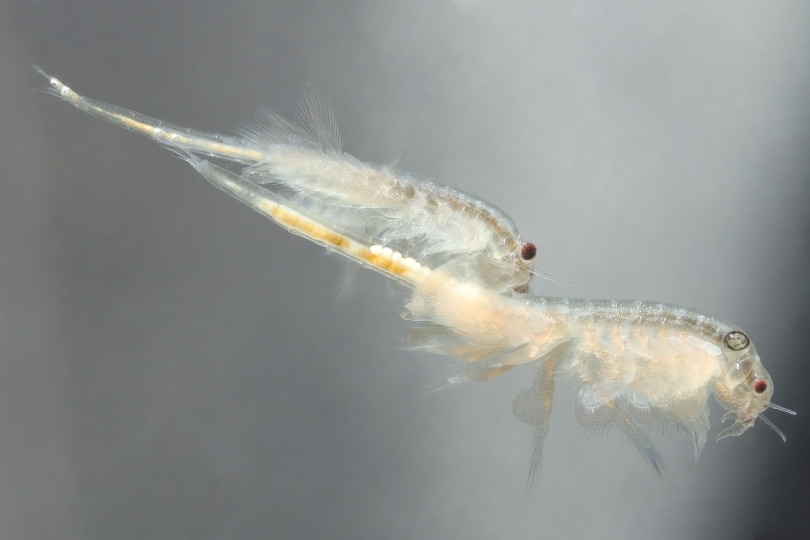
How to Make My Baby Betta Grow Bigger
The best way to ensure your betta grows to a large and healthy size is based entirely on how well you’re taking care of it and how old it is.
First, you should ensure the aquarium is a minimum of 5 gallons in size (and larger is always better). It should have filters to help maintain the water, which will keep the tank in the most pristine condition. You should also be sure to keep an eye on the temperature and that it falls within the tropical range of 76° F to 82° F. Invest in an internal thermostat heater that can maintain an ideal 78°F temperature.
Diet is also key and needs to consist of food that is rich in protein. Bettas are carnivores, so follow the advice in our section above on what to feed your baby betta and it will help your fry to thrive. Do as much research as possible on what to feed your fry so your baby betta will eat well.
Limiting stress is super important, and you should be familiar with some of the more common aquatic diseases, such as:
Meticulous monitoring of your baby betta and ensuring you’ve done everything to help protect it and care for it should all potentially allow your fry to grow bigger and live longer.
How to Breed Betta Fish
You need to start with a breeding tank, which is also the tank that the fry will grow up in. Your best bet is a 10-gallon tank and no substrate.
Female betta fish can be kept together in the same tank. Usually, 4 to 6 in a tank should be fine. Male Bettas must be housed separately, or chances are, they will fight to the death, hence their original name, Siamese Fighting Fish. Ensure the male is energetic and healthy, has undamaged fins, and is brightly colored (interestingly, studies have shown that female bettas seem to prefer red over blue-colored males).
Start by adding the female into the breeding tank and then add the male after about 30 minutes. They’ll engage in mating rituals that will include the male making a bubble nest that floats on the top of the tank’s water (it will look like a large cluster of tiny bubbles). The male then hovers under the nest and waits to mate with the female.
Once they’ve mated, the female will lay her eggs, and she should be removed once this is done. The male will start placing the eggs in the bubble nest and will spend the next 3 days looking after the nest and the newly hatched betta fry. Once the fry are swimming on their own, the male should be removed, and you can start feeding the babies.
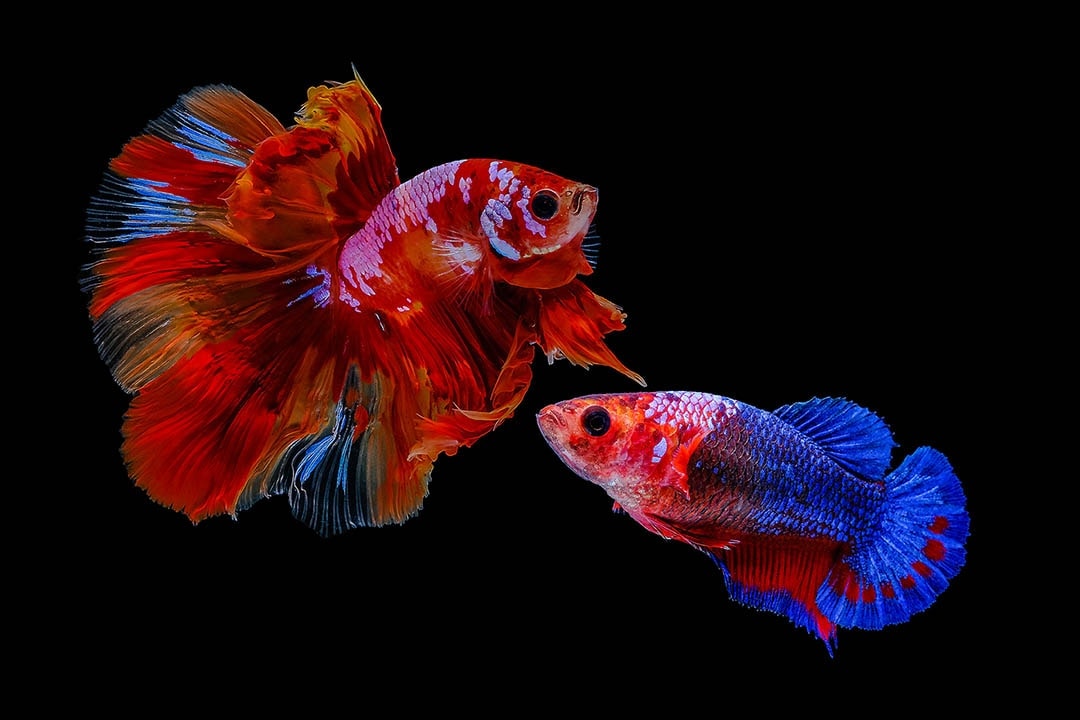
Conclusion
Now you know what it takes to raise a baby betta. It’s not an easy task—even the process of buying a betta fry can be daunting. You should most definitely do a lot of research before you opt to purchase your first fry and keep in mind that it is really a task meant for someone with experience with bettas.
We hope we’ve provided you with a bit of insight into raising a betta fry. It’s absolutely a labor of love, and while challenging, it’s also very rewarding.
Featured Image Credit: ZooFari, Wikimedia Commons

